A garden lawn can be a natural, attractive yet practical addition to your outdoor space. You might want somewhere to play games with the kids, a tranquil space to lay in the sun, or just a tidy, green space that’s easy to maintain.
Of course, the quickest way to a new lawn might be to use rolls of turf, but it’s usually much cheaper and easier to plant a lawn from seed.
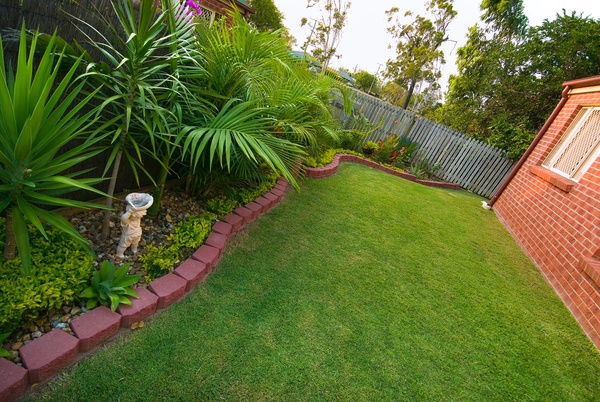
Whether your garden is big or small, the process for plant a lawn from seed is pretty much the same and doesn’t need to involve any special knowledge or equipment.
To make a garden lawn in 3 simple steps…
1. Prepare The Soil
While you might keen to start shopping for seed and start sowing, preparing the ground well is an essential first step. As you might expect, the success of your new grass will really depend on the conditions you create for it at the beginning.
First of all, you’ll need to identify and mark out the area where your new lawn will be. If you’re designing a new garden layout, then have a think about how your new lawn area will fit with the other sections of your outdoor space. Also consider how you’ll access, mow and use the new lawn.
What is the soil like where you’ll be sowing your grass seed?
If the soil is poor, then it’s worth adding organic matter – such as well-rotted manure – to improve the soil structure and add nutrients. If you can leave organic matter for a few weeks to settle and incorporate into the soil, then this can be even more beneficial.
You’ll want to remove weeds by hand and it’s usually best to avoid residual weed killers, as this may hamper the growth of your new grass seed.
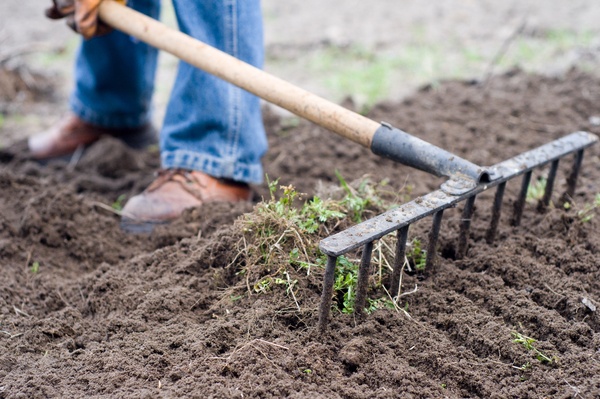
You’ll also need to dig the ground over to a depth of around 20cm and rake it through to create a nice level surface – treading it over and raking in different directions.
The more time and resources you devote to improving the soil and creating a smooth level surface, the healthier and more attractive your new lawn will be.
2. Spread The Grass Seed
Next, it’s time to sow some grass seed. Choose a seed that is appropriate for how you intend to use your new lawn.
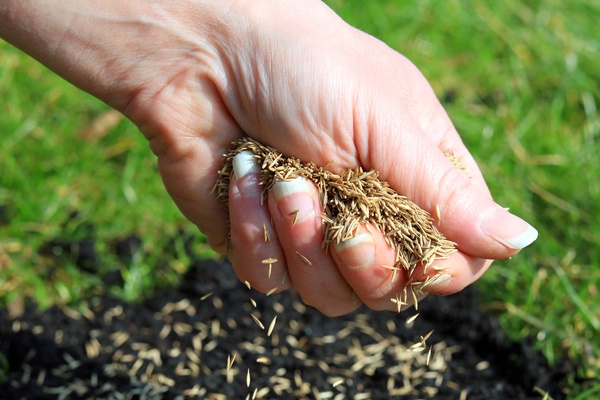
While there are many brands and varieties of seed, there are generally 3 main ‘types’ to consider…
1) Ornamental / Fine, Luxury Grass
For a luxury lawn that will be well maintained and have limited use, allowing for finer blades of grass that give an attractive finish. However, this kind of grass may not stand up to heavy wear and tear or extensive traffic.
2) General Purpose Grass
This is widely available and uses a variety of grasses that are considered to be hard-wearing and suitable for most conditions and soil types. You’ll probably want to use seed like this for family gardens, used by children and pets, or for areas that will be walked on regularly.
3) Grass for Shady Areas
You might have areas of your garden where other grass seeds don’t perform very well due to low light levels. This might include under large trees, besides fences and walls or perhaps next to high buildings where there is limited sunshine. These shady varieties should do much better in these low light levels but there may be at a trade off against appearance or durability.
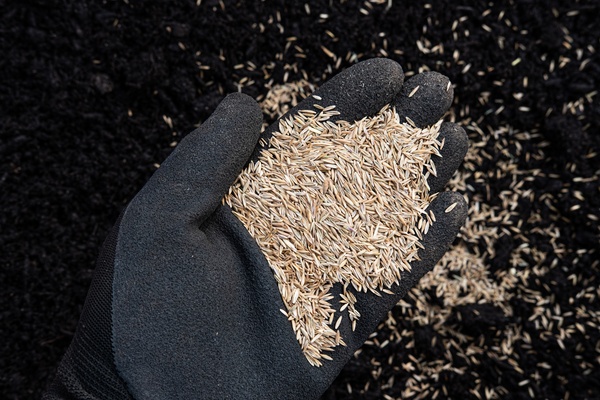
How much seed do I need?
Of course, your grass seed should come with specific instructions about how much to use and where. However, the general ‘rule of thumb’ would be to scatter one-and-a-half ounces (just over 40 grams) of seed per square metre.
You can use a seed scattering tool to do this (a good idea for large areas), but it’s quite possible to get good results by simply scattering the seed by hand. Scatter the seeds evenly and for large areas, it might be worth marking out 1 metre squares and working on one section at a time, measuring out the seed as you go.
Once you have laid the seeds, rake over the area so that the seeds are covered within the soil. You might also choose to use a lawn top dressing to help get the seeds off to a good start. Be sure to water the area well with a sprinkler or fine hose spray.
3. Aftercare and Maintenance
Once you have sown your grass seed, it could anywhere from a few days to a few weeks before germination occurs and you start to see the first green shoots appearing. During this time, it’s critically important that you care for and protect the area from potential problems.
First of all, you might find that birds decide to have a banquet on your new investment. Besides the seeds being eaten, you might find that birds or other animals enjoy a nice dust bath on the newly prepared area, disturbing the seeds below. If possible it’s best to try to keep as many creatures away from the area as possible – including people!
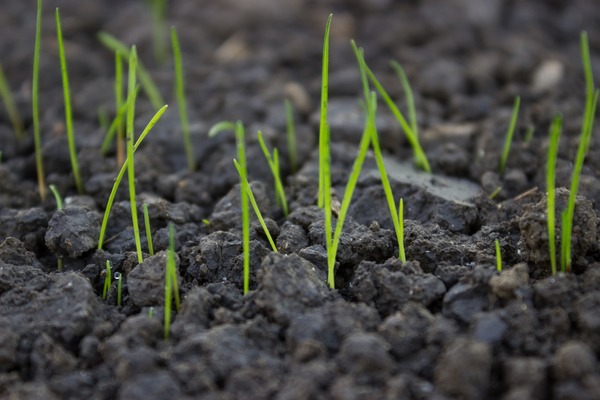
You could cover the area with loose netting, use bird tape or other deterrents and also try to block the area off by other means where possible.
Another common problem to avoid, is allowing the ground to dry out. The seeds will require moisture in the soil in order to germinate successfully. In dry weather, you might need to water the area nice or twice a day – using a sprinkler or hose with light spray attachment. Avoid heavy watering that might dislodge seeds or even wash them away. Of course, the easiest option might be to keep an eye on the weather forecast and sow your new lawn at a time when rain is expected for the next few days.
Once the new blades of grass begin to grow, you’ll need to wait until it reaches beyond a height of 4cm before cutting your new lawn. If your mower has adjustable height settings, then it’s probably best to start at the highest and gradually move the cutting height lower through successive mowing.
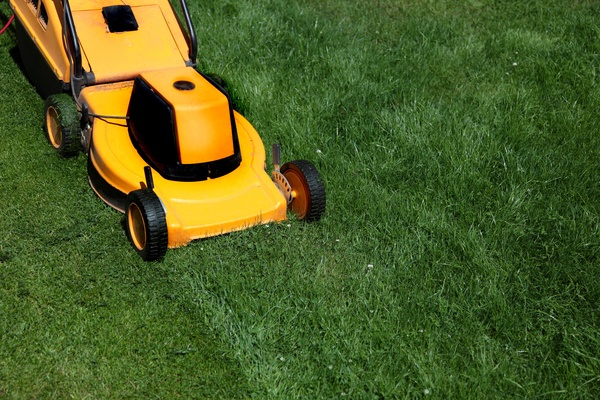
Some say you shouldn’t use your new lawn very much during the first season. Of course, this may not always be a practical option and you’ll no-doubt be keen to use it as soon as possible. At the very least, you might decide to limit usage and perhaps section certain areas to recover, where early damage occurs. Any areas where the first round of sowing was less successful, you could also re-seed as temperatures and conditions allow.
You might also like to dress over any bumpy areas with sieved compost to help maintain a level surface.
When considering other additives such as lawn feed or ‘weed and feed’ products, it’s best to wait until at least 6 months after your new lawn has been established, and don’t use too heavily as the new blades might actually be damaged by overfeeding.
Final Thoughts
Hopefully your new lawn should serve you well for many years to come and provide a natural, pleasant, and easy-to-maintain space in your garden. Don’t forget to keep it fed and watered through subsequent seasons and keep on top of mowing to keep weeds at bay and maintain the lawn’s appearance.
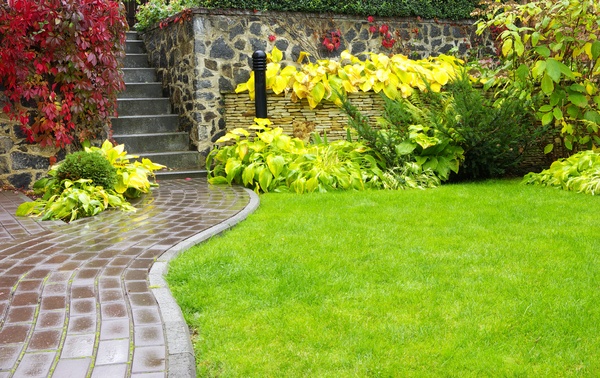
Remember that planting a new lawn from seed is quick and cost effective – compared to many other options – and needn’t be a flat, square space. How about creating interesting curves or geometric shapes, or even using grass seed to create paths and cover unsightly areas in your outdoor space?
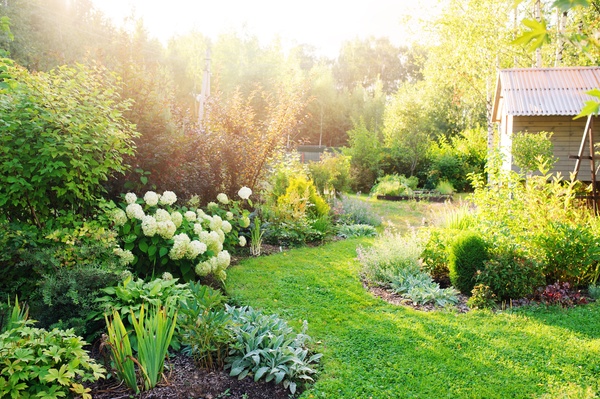
Are you planting a new lawn in your garden this year? Let us know how you get on? Which varieties of grass seed will you use? We’d love to hear your thoughts in the comments below.
